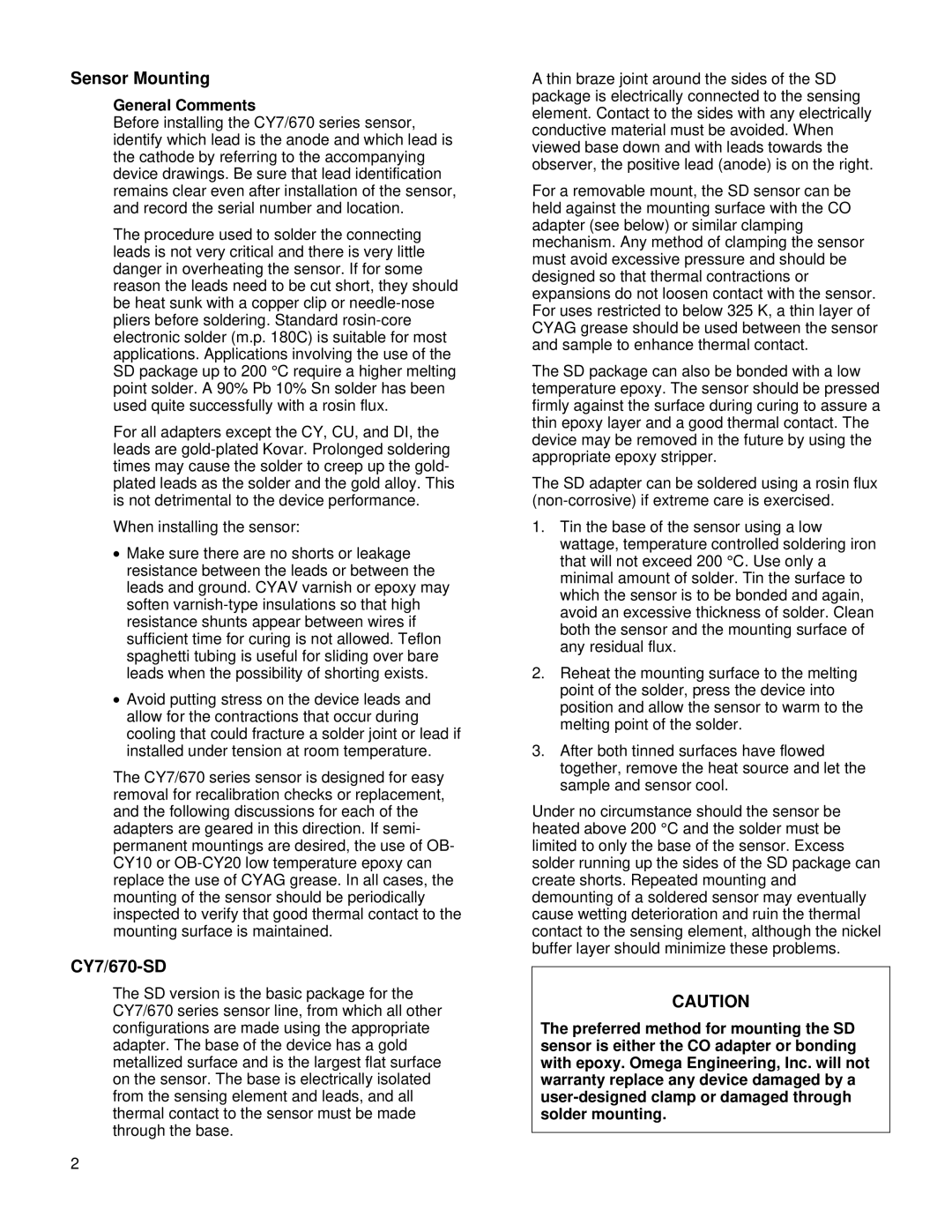CY670 Series specifications
The Omega Speaker Systems CY670 Series is a remarkable addition to the home audio market, designed to cater to both audiophiles and casual listeners seeking high-quality sound performance. Known for its sleek design and advanced technology, the CY670 Series has garnered attention for its ability to deliver a rich, immersive listening experience.One of the standout features of the CY670 Series is its state-of-the-art speaker technology. Each model within the series is equipped with high-efficiency drivers, ensuring that sound reproduction is both powerful and precise. The tweeter and woofer combinations are meticulously engineered to provide a balanced frequency response, allowing listeners to savor the nuances in every track. Whether it’s the crisp highs of a violin or the deep lows of a bass guitar, the CY670 ensures that no sound is overshadowed.
The series also incorporates advanced materials in its construction. The cabinets are made from high-density MDF, which helps to reduce vibrations and eliminates unwanted resonance. This results in a cleaner sound profile that is free from distortion, even at higher volumes. The aesthetic appeal of the cabinets is enhanced by a modern finish, making them not only a functional addition to any home theater or music setup but also a stylish one.
Connectivity is another strong suit of the CY670 Series. Featuring both wired and wireless options, including Bluetooth integration, users can easily connect their devices and stream music effortlessly. This flexibility allows for seamless transitions between different audio sources, making it convenient for users who enjoy a variety of listening experiences.
Another notable characteristic of the CY670 Series is its versatility. Whether used for watching movies, playing video games, or simply enjoying music, these speakers adapt effortlessly to various media formats. The immersive surround sound capabilities provide an engaging experience that draws listeners into their favorite content, making it ideal for home theaters.
In terms of setup, the CY670 Series has been designed for user-friendliness. With straightforward installation procedures and comprehensive user guides, consumers can easily integrate these speakers into their existing audio systems.
In summary, the Omega Speaker Systems CY670 Series stands out in the competitive audio market due to its cutting-edge technology, stylish design, and remarkable sound quality. Its combination of high-efficiency drivers, resilient construction, versatile connectivity options, and user-centric design makes it a prime choice for anyone looking to elevate their auditory experience. Whether for casual listening or intense media consumption, the CY670 Series promises to deliver sound excellence.

